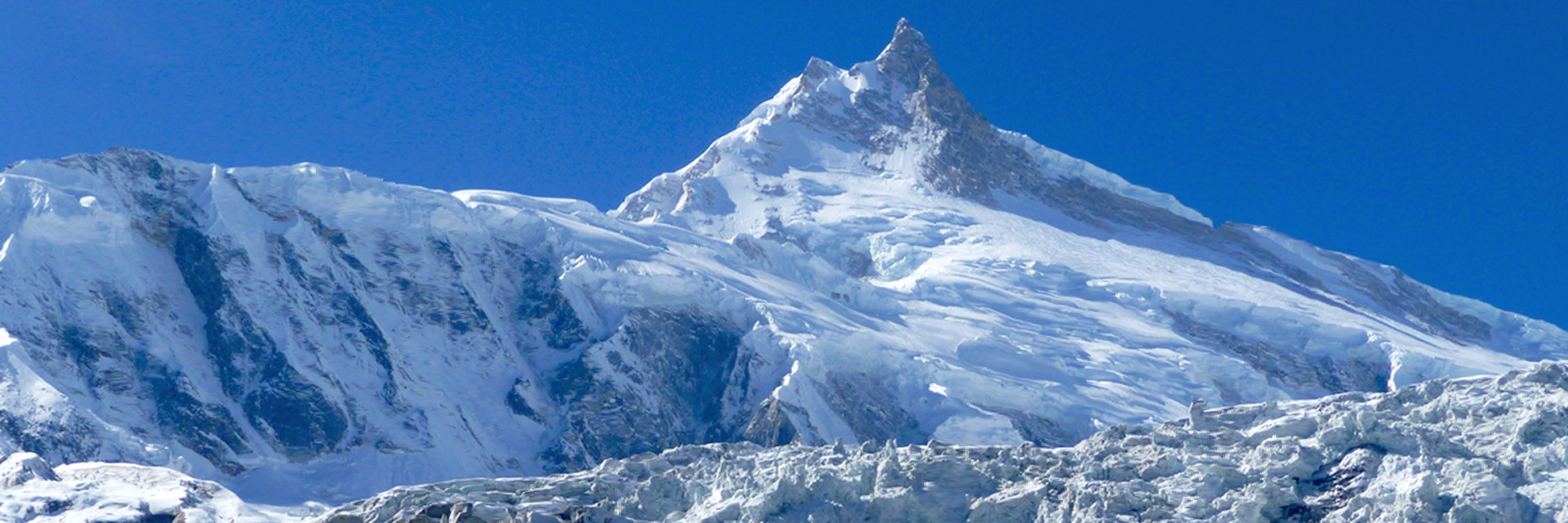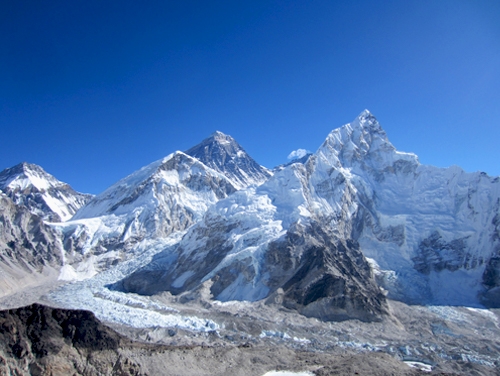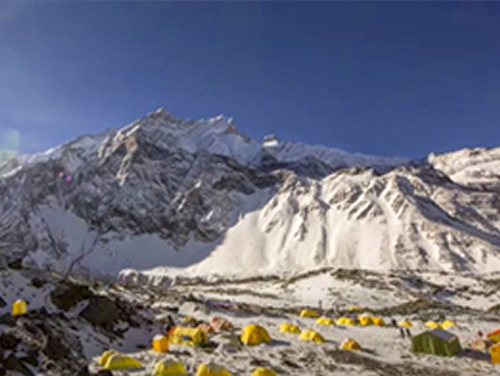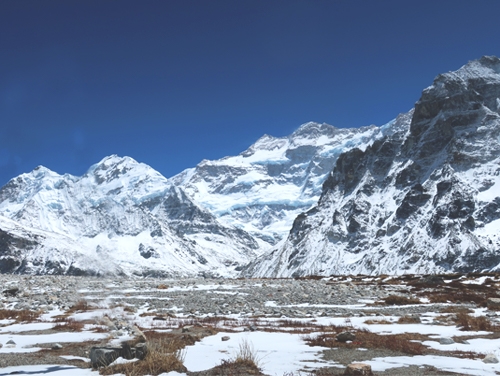Mt. Manaslu is the eighth highest mountain in the world with an elevation of 8,156m. This mountain is popular for extreme mountaineering climbers. It is located in the Mansiri Himal, west-central parts of Nepal. Manaslu came from the Sanskrit word “Manasa” which means “Mountain of Spirit”. It was the first ascent by a Japanese expedition on May 9 1956 by Toshio Imanishi and Gyalzen Norbu.
Manaslu lies at the end of isolated Himalayan valleys in the central-western Nepal Himalaya’s Kali Gandaki valley 40 miles east of Annapurna. To summit the Manaslu, there are six established routes, of which the south face is the toughest.
Best Time for Manaslu Expedition
If you are climbing to the base camp then there will be not so big a problem about which time is best to visit Manaslu. But if you are thinking of scrambling the trial towards Makalu Expedition, then it becomes a must to ascent during the best trekking season which is either spring or autumn.
Spring Season
Spring is the vital climbing season for the Manaslu Expedition Nepal. In spring the climate is warm and views are clear. The spring season varies from March to May for three months. The chances of rain or cloud are less in relation to other times. The spring season is the most suitable for climbing because of warm weather, not so much snow deposited. The wind velocity might be challenging for this season but taking into consideration all kinds of factors, spring is the best climbing time for the Himalayas of Nepal.
Autumn Season
The autumn season starts from late September to November. It is the second-best time for a climbing adventure in Nepal. The beautiful rich green hills at the lower part and the crystal clear Himalayas are the major features of this season. Autumn is the best time for enjoying views of clear nature and a suitable time for climbing the mountains.
There are ample records of successful ascending to Makalu in the autumn season. The best weather, proper climbing routes, and less dangerous snow slides in the autumn give more possibilities of a successful summit over Makalu.
Winter and monsoon is surely not the companion you want during the Manaslu expedition. These seasons will create trouble for the hikers adding to the difficulty level. Winter certainly has the worst climate with the temperature dropping low as -15 Degree Celsius.
It will be hard to keep the mind stable in such circumstances which is the cause many trekkers give up on the expedition. Likewise, the monsoon causes heavy rainfall which causes the trail to be slippery. The moving clouds with rain also block the views which makes hiking useless.
Climbing Strategy for Manaslu Expedition
We start our Manaslu Expedition following the Dudh Gandaki Valley trial up to Samagaon. From Samagaon we will then trek to Manaslu Base Camp standing at an altitude of 4,750 m. From Manaslu Base Camp we will follow the North Ridge Route as Manaslu Expedition Route.
From Base Camp to Camp I (5700m/18,700ft) you will see mixed terrain with few crevasses and a short ice section. It will take about 4 to 6 hours to reach Camp I. We set out Camp I at the bottom of the North Peak right above the glacier.
The climbing from Camp I to Camp II (6400m/21,000ft) is considered the technical crux with about 40-degree snow slopes and a brief steep ice section. Camp II will be above the icefall on the snowy terrace and there can be a lot of snow accumulation. It takes about 3 to 4 hours to reach the camp depending upon your physical fitness and weather.
The climb from Camp II to Camp III (6800m/22,310ft) is short and only takes around 3 hours. Today there may be the threat of high, cold winds. Reaching Camp III may be the easiest part of the expedition because there is less threat in the route.
Camp III to Camp IV (7450m/24,445ft) is a long day and a physical climb with a few steep sections at extreme altitudes. While stepping toward Camp IV, we have to ascent for 5 to 7 hours depending upon the physical condition and weather. You will have to climb a 50 to 55-degree slope and this section is an adventurous section.
Finally, summit day (8,156m/26,759ft) will be about 7 to 9 hours of ascent if all goes well.
Manaslu Expedition Difficulty
Before deciding to ascend Mount Manaslu, make sure to meet the requirements. You need to be in very good physical condition, healthy, fit, good stamina, and courageous. Manaslu Expedition is more technical and challenging as this is a stiffer summit than other mountains. Climbers are required to have excellent physical and mental capacity, a great level of climbing ability, and altitude adeptness at high altitudes. A single trek or ascent will be at least 7 to 8 hours a day.
Be ready for icy and rocky terrain rugged trials. High altitude atmosphere conditions should be taken seriously while doing Manaslu Expedition. Technical expedition equipment is crucial in the expedition. Many adventurers value Manaslu as preparation for a more technically challenging ascent, like Everest.





